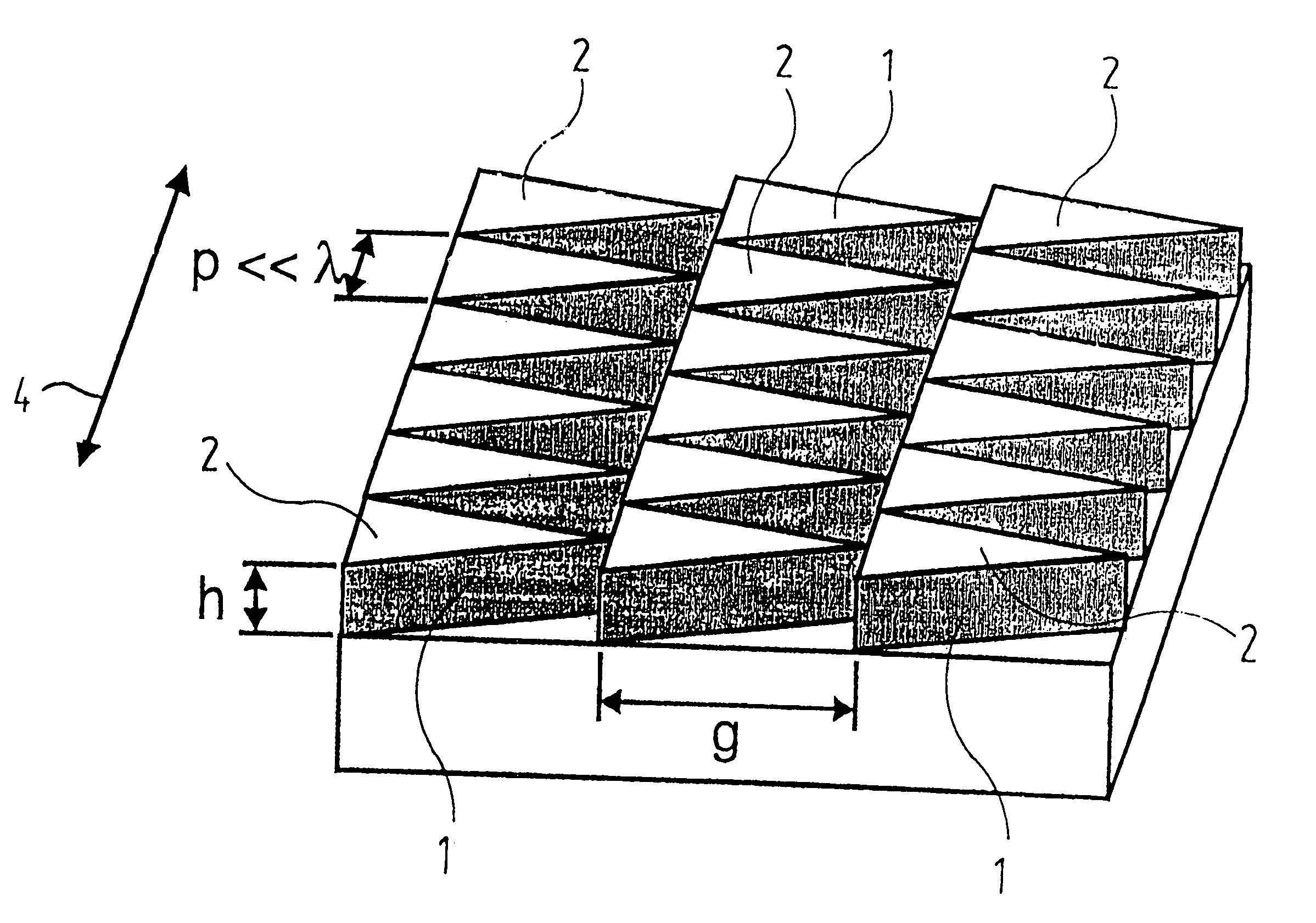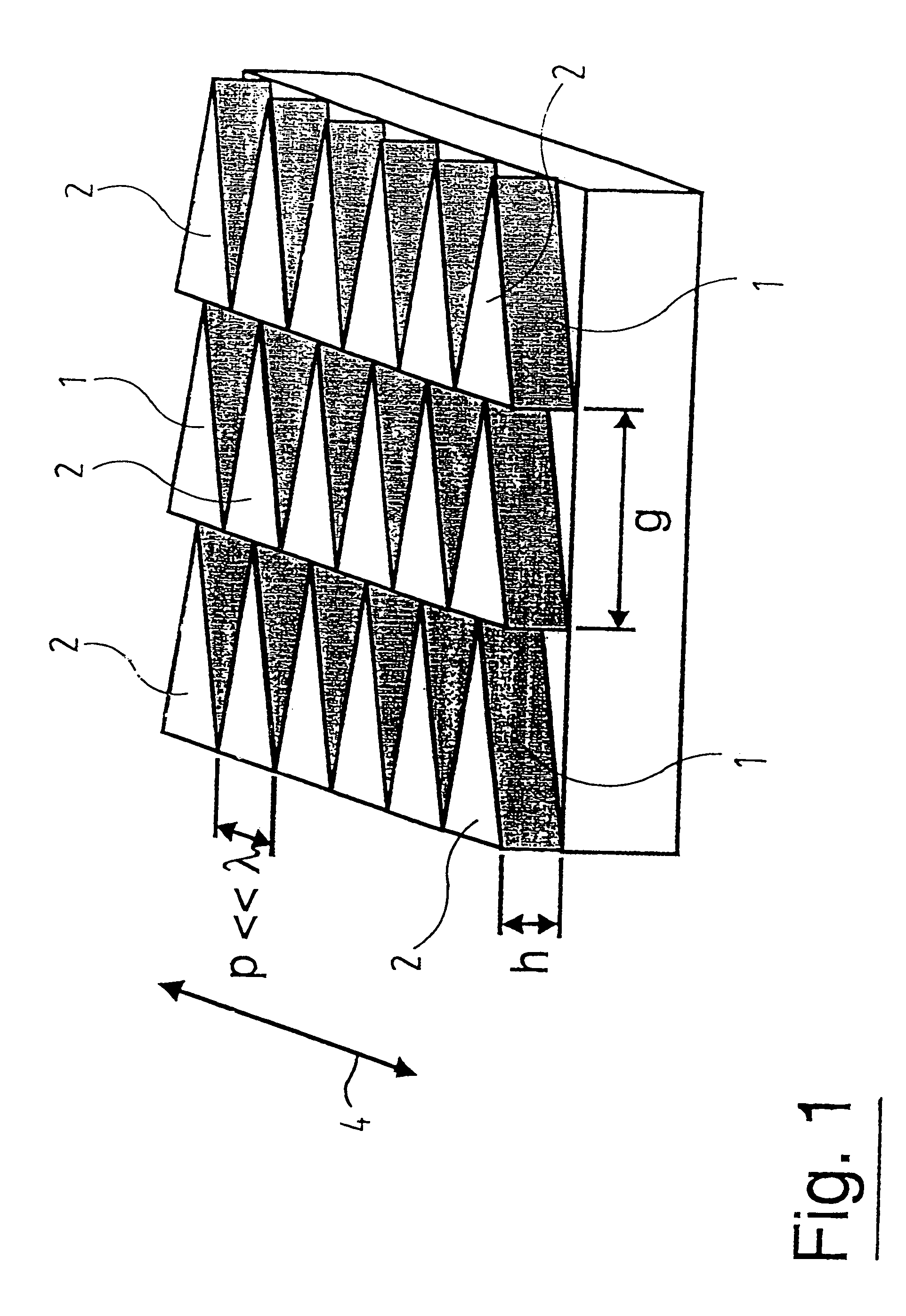Diffractive optical element
a technology of diffractive optical elements and optical elements, which is applied in the direction of microlithography exposure apparatus, photomechanical treatment, instruments, etc., can solve the problems of high degree of detail of mechanical methods, high cost and error-prone, and the limitation of very short wavelengths of light, etc., and achieve high resolution
- Summary
- Abstract
- Description
- Claims
- Application Information
AI Technical Summary
Benefits of technology
Problems solved by technology
Method used
Image
Examples
Embodiment Construction
[0052]The blazed phase grating represented in FIG. 1 consists of a transmissive material with a refractive index n1. On the surface pointing upwards, it bears a multiplicity of parallel diffraction structures 1 extending in a straight line, three of which are shown as details in the drawing. The diffraction structures 1 have a width g perpendicular to their longitudinal direction. Since the diffraction structures 1 are directly next to one another, their width g corresponds to the conventional grating constant. In order to be able to achieve diffraction effects, the size of g is greater than the effective wavelength λ of the electromagnetic radiation for which the phase grating is intended, in the material with the refractive index n1. The effective wavelength λ is in this case given by
λ=λv / n1,
where λv is the wavelength in a vacuum.
[0053]Every diffraction structure 1 is in turn made up of a multiplicity of individual substructures 2 placed directly next to one another, each of which...
PUM
| Property | Measurement | Unit |
|---|---|---|
| refractive index | aaaaa | aaaaa |
| thickness | aaaaa | aaaaa |
| width | aaaaa | aaaaa |
Abstract
Description
Claims
Application Information
 Login to View More
Login to View More - R&D
- Intellectual Property
- Life Sciences
- Materials
- Tech Scout
- Unparalleled Data Quality
- Higher Quality Content
- 60% Fewer Hallucinations
Browse by: Latest US Patents, China's latest patents, Technical Efficacy Thesaurus, Application Domain, Technology Topic, Popular Technical Reports.
© 2025 PatSnap. All rights reserved.Legal|Privacy policy|Modern Slavery Act Transparency Statement|Sitemap|About US| Contact US: help@patsnap.com



